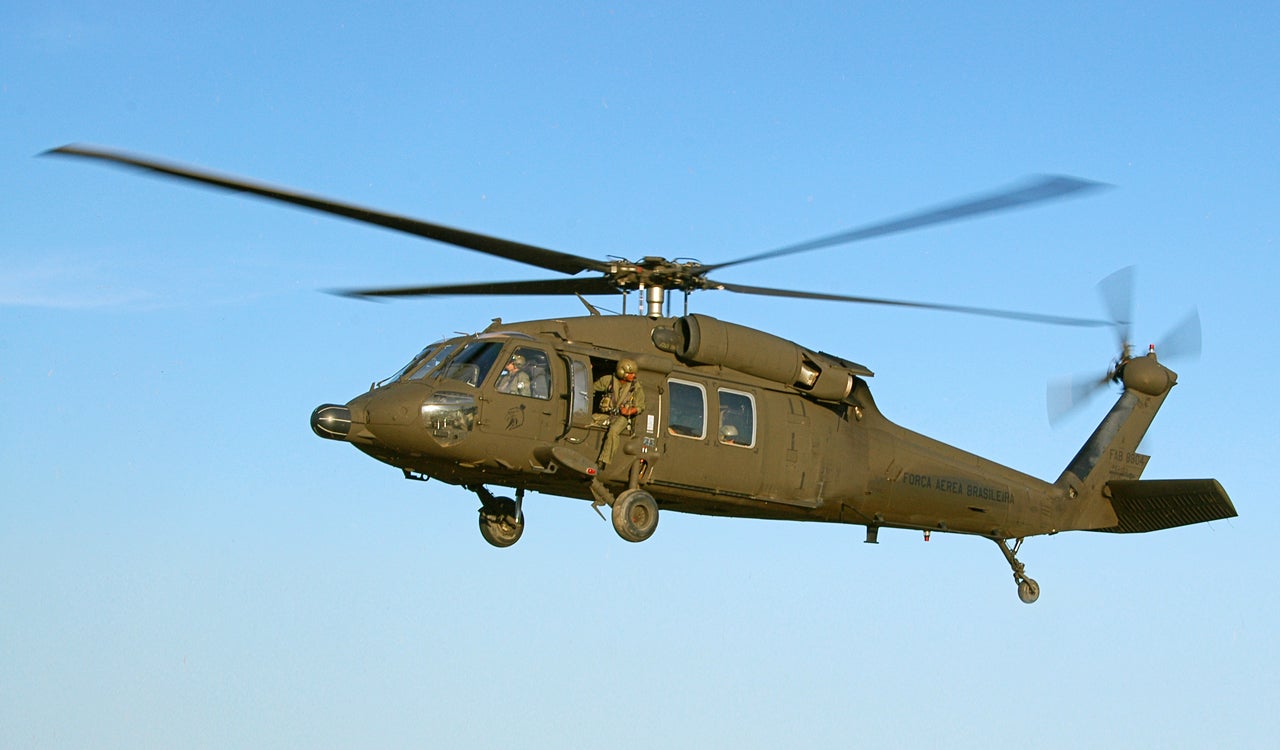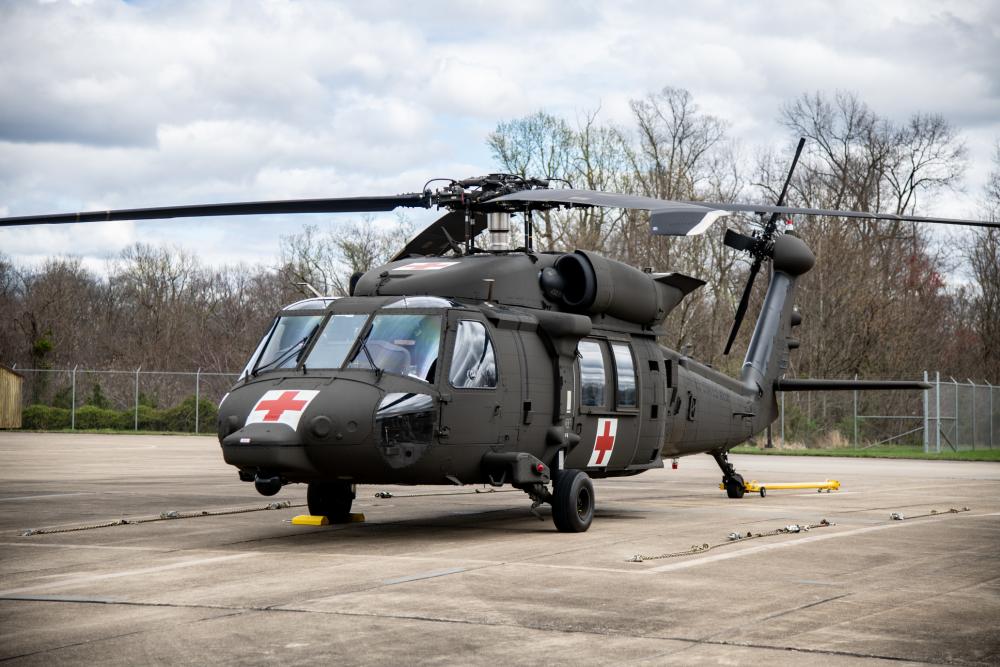Why the UH-60 Blackhawk is Essential for Modern Armed Force Operations
Why the UH-60 Blackhawk is Essential for Modern Armed Force Operations
Blog Article
Comprehensive Overview of the UH-60 Blackhawk Helicopter
The UH-60 Blackhawk helicopter, a characteristic of contemporary armed forces aviation, has actually played an indispensable duty in diverse operational theaters because its introduction in the 1980s. With its robust style and adaptability, it has actually adapted to meet different missions, from army transportation to medical emptying. As we discover its intricate history, style specifications, and technological innovations, it comes to be evident that the Blackhawk's impact prolongs far past the battleground. The full degree of its heritage and the lessons discovered from its implementation throughout the world warrant a better examination.
Background and Advancement
The UH-60 Blackhawk helicopter has regularly been a cornerstone of U.S. armed forces aviation considering that its introduction in the late 1970s. Created by Sikorsky Airplane, the Blackhawk was designed to fulfill the Military's need for a flexible utility helicopter that can execute a variety of objectives in various environments. UH-60 Blackhawk. The advancement procedure began in 1972, with the first model flying in 1974
Its operational launching came throughout the 1980s, where it was promptly recognized for its ability, speed, and agility to deliver soldiers and freight successfully. The Blackhawk's efficiency in the 1983 Grenada intrusion and succeeding procedures solidified its track record as a trustworthy workhorse for the united state Army. Throughout the years, the helicopter has actually undertaken various upgrades and variants, adjusting to advancing armed forces demands, including the addition of advanced avionics and weapon systems.

The Blackhawk's design has likewise progressed to offer different branches of the armed forces and allied forces, showcasing its flexibility. Today, it continues to be an essential element of U.S. military procedures and continues to be a preferred option for rotary-wing air travel around the world, reflecting its long-lasting tradition and continuous importance in contemporary war.
Style and Specs
Engineered for performance and versatility, the UH-60 Blackhawk helicopter includes a durable design that enhances its functional abilities. The airframe is created largely from light weight aluminum alloys, offering a balance of strength and weight performance. With a size of 64 feet and a rotor diameter of 53 feet, the Blackhawk is designed to fit a wide variety of missions. Its optimum takeoff weight is about 22,000 pounds, allowing it to lug significant hauls.
The helicopter is powered by two General Electric T700-GE-701C engines, each delivering 1,800 shaft horsepower, which makes sure high degrees of dependability and efficiency in diverse atmospheres. The rotor system is a four-blade, totally articulated style that permits exceptional ability to move and stability, even in adverse problems.
Furthermore, the UH-60 incorporates sophisticated avionics and trip control systems that improve situational recognition and pilot control. The cabin is made for quick reconfiguration, permitting it to support numerous mission accounts, from army transport to medical evacuation. On the whole, the design and requirements of the UH-60 Blackhawk show a dedication to functional quality and versatility in the area.

Functions and Missions
With its robust design and advanced abilities, the UH-60 Blackhawk helicopter offers a wide range of roles across various military procedures. Initially established for army transportation, the Blackhawk has advanced to execute a wide selection of objectives, including clinical discharge, search and rescue, and logistical support. Its versatility allows it to run in diverse atmospheres, from metropolitan landscapes to tough terrains.
In fight circumstances, the Blackhawk is essential for putting and removing special operations forces, providing them with the movement required to implement their missions successfully. In addition, the helicopter can be equipped with sophisticated communication and avionics systems, boosting its role as a command and control system in dynamic fight situations.

Technical Developments
Incorporating innovative technologies has substantially improved the efficiency and capabilities of the UH-60 Blackhawk helicopter. The incorporation of advanced avionics systems, consisting of electronic trip control and improved situational recognition screens, has boosted pilot navigating and decision-making in complex atmospheres. These systems make it possible for real-time data handling, assisting in much better communication and control during goals.
Furthermore, the Blackhawk's airframe has gone through substantial upgrades, making use of composite products that lower weight while boosting architectural stability. This alteration contributes to boosted fuel efficiency and functional range. The helicopter is also outfitted with innovative propulsion systems that supply better power and reliability, making sure ideal efficiency in varied conditions.
Furthermore, the integration of modern-day sensors and weapon systems has actually increased the Blackhawk's flexibility. Enhanced targeting capacities and advanced risk detection systems permit reliable engagement Your Domain Name in fight scenarios, enhancing mission success prices.
Worldwide Impact and Legacy
The UH-60 Blackhawk helicopter has actually made an extensive effect on military procedures and humanitarian efforts worldwide considering that its introduction in the late 1970s. Its adaptability and progressed technology have allowed it to offer in different functions, consisting of army transportation, medical evacuation, and logistical assistance (UH-60 Blackhawk). The helicopter's performance in fight situations has actually redefined airborne wheelchair, enabling forces to respond swiftly and successfully to dynamic field of battle conditions
Globally, the Blackhawk has been deployed in countless problems, from the Persian Gulf to the Balkans, showcasing its versatility to diverse environments. Its function in humanitarian objectives, such as disaster relief and search-and-rescue procedures, has more strengthened its track record as a reputable asset in situation scenarios.
The tradition of the UH-60 expands beyond its armed forces applications; it has likewise affected helicopter style and operational teaching worldwide. Its success has actually triggered various other nations to develop similar aircraft, improving international air travel requirements and functional capacities. As the Blackhawk remains to evolve with modern upgrades, its influence on both noncombatant and military air travel continues to be significant, guaranteeing its area in history as one of the most famous helicopters why not check here of its time.
Conclusion
The UH-60 Blackhawk helicopter stands as a testament to innovative design and flexible military application. Its style and abilities have dramatically designed modern-day airborne operations, boosting troop movement and functional performance. The recurring advancements in modern technology remain to strengthen the Blackhawk's role in modern warfare and humanitarian efforts. Because of this, the Blackhawk has left an indelible mark on army aviation, affecting future helicopter designs and redefining tactical strategies throughout the globe.
The UH-60 Blackhawk helicopter, a characteristic of modern-day military aviation, has played a vital function in diverse operational cinemas since its introduction in the 1980s - UH-60 Blackhawk.The UH-60 Blackhawk helicopter has consistently been a cornerstone of United state armed forces aviation because its introduction in the late 1970s.Engineered for performance and versatility, the UH-60 Blackhawk helicopter features a durable layout that improves its operational capacities.With its durable layout and progressed capacities, the UH-60 Blackhawk helicopter offers a plethora of roles throughout different armed forces procedures.The UH-60 Blackhawk helicopter has made a profound influence on army operations and altruistic efforts worldwide given that its intro in the late 1970s
Report this page